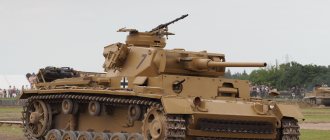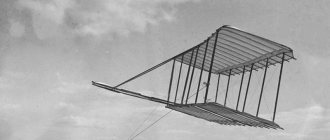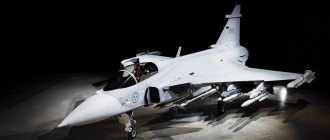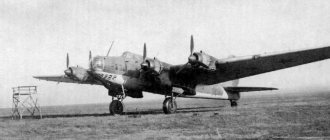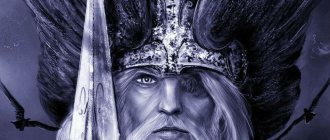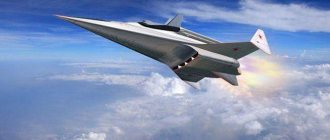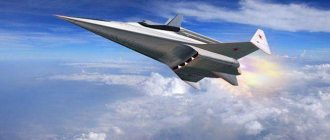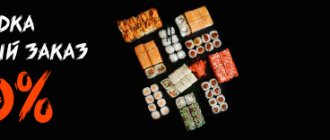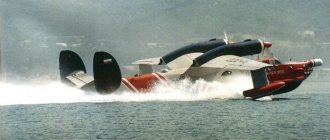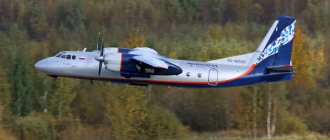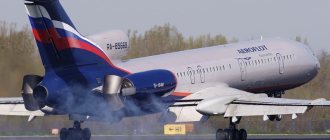Night in Belarus, 1943. Private Koch took over to guard the ammunition depots. Quiet...Russian air raids almost never happen. There is an anti-aircraft unit nearby. He did not pay attention to the quiet chirping that merged with the crackling of crickets. And suddenly all hell broke loose around us! Bombs exploded and the warehouse was destroyed by a fire tornado. Heart-rending screams were heard: “Achtung! Nachthexen!!!" (German, “Attention! Night witches!”). This was the last thing Koch heard - he was covered by a flaming wave!
The small, not at all menacing-looking plywood airplane Po-2 became a nightmare for the German invaders.
The beginning of a legend
In the mid-20s of the last century, the young Soviet aviation faced the urgent problem of creating a modern, but simple and easy-to-fly training aircraft to polish the skills of numerous flight school students, which were organized in large numbers in Soviet Russia. The design in 1923 was undertaken by the young but already famous designer N.N. Polikarpov.
Polikarpov Nikolai Nikolaevich (1892-1944) - legendary Soviet aircraft designer. Creator of many combat aircraft: I-1, I-5, I-16, R-3. Participated in the design of the first fighters of the MiG family.
After drawing up the tactical and technical requirements for the future machine in 1924, a transitional version of the 2U-B3 training biplane with a liquid-cooled BMW-3 engine was designed, which received a more concise designation P (transitional)-1.
Initially, the abbreviation of Soviet aircraft indicated the purpose of the machine: I - “fighter”, U - “trainer”, B - “bomber”, R - “reconnaissance”, etc. Subsequently, with an increase in the number of domestically produced models, the abbreviation for the first letters of the designer’s surname are “Po” - Polikarpov, “Il” - Ilyushin, “Tu” - Tupolev, “Pe” - Petlyakov and others.
The first test flights took place in early 1926.
Serial production was planned, however, time put forward new requirements for the flight characteristics of training machines and production did not take place.
It was decided to design an aircraft with an engine power of 100 hp, for the domestic engines being developed. By the middle of 1926, the M-11 (plant No. 4) and M-12 (NAMI) engines were built, for which the first mock-up of the U (training)-2 was designed (the plane would receive the name Po - Polikarpov later) and construction of the first working copy began.
After testing the engines on snowmobiles, the designers chose the M-11 engine (developed by A.D. Shvetsov). In mid-September 1927, a prototype was provided to the Air Force Research Institute for testing. The machine generally complied with the requirements, with the exception of the ascent speed.
Having improved the aerodynamics during refinement, while personally changing the structural features of the wing to be more streamlined and lighter, Polikarpov presented a second sample for testing.
In March 1928, the famous Soviet pilot Mikhail Gromov conducted test flights, in which the aircraft demonstrated excellent flight qualities and was launched into the experimental series on March 29.
Mass production of the U-2 began at Leningrad plant No. 23 and increased momentum very quickly. More than a thousand cars were produced per year, and by 1938 there were already more than 1,500!
In 1944, after the premature death of N.N. Polikarpov's plane was renamed Po-2.
During the Korean War, the Po-2 defeated an American jet fighter
It sounds incredible, but Po-2 has won a battle against an American jet fighter. During the Korean War, the American Lockheed F-94 Starfire interceptor launched an attack on a North Korean-owned Po-2. Due to the speed difference, the F-94 crew was forced to slow down to the point where the engine stalled. The interceptor fell and crashed, but Po-2 returned safely to base. In Korea, there are several other cases where American pilots crashed into a Po-2 during a battle, but in these situations both aircraft died.
Description and performance characteristics
U-2 (Po-2) is a single-engine two-seat biplane (an aircraft with two pairs of wings in parallel planes) with a body (fuselage) made of wood. The tail section is lined with canvas.
The stabilizer and tail unit are removable (area about 5 sq.m.), three-post fixed landing gear with a rubber shock absorber. The frame (bracing) is also made of wooden parts. Air-cooled motor M-11, power - 125 horsepower, two-blade propeller.
| total length | 8,170 m |
| Empty training sample weight | 752 kg |
| Flight weight | from 1012 (educational) to 1472 (sanitary modification) |
| Upper wing span | 11,420 m |
| Nizhny Novgorod | 10,655 m |
| total area | 35.40 sq.m |
| Gasoline fuel tank | 125 liters |
| Crew | 2 people |
| Speed | up to 150 km/h |
| landing | up to 70 km/h |
| Ceiling height | 3800 m |
| Run length | 100-150 meters |
| Non-stop flight range | up to 400 km |
La-5
The La-5 stood out from the fighters produced in the first half of the 20th century by the presence of a two-row engine. After Nazi Germany attacked the USSR, Soviet designers began modifying the aircraft, paying increased attention to aerodynamic characteristics. The tests carried out made it possible to make changes to the La-5 configuration so that the engineers at the plant did not have to resort to major alterations.
Thanks to this modernization, the La-FN entered the war in 1943, becoming one of the best Soviet fighters. This model, in addition to a modified body, received an improved engine. However, the best fighter produced by the Soviet Union was the La-7, created on the basis of the La-5. The first was capable of reaching 80 km/h more than the prototype. Moreover, the increase of 60 km/h was ensured by the aerodynamics of the body.
Modifications
Originally a training aircraft, the U-2 was widely used in various fields of aviation. From agriculture and postal services, to medicine and participation in hostilities. In accordance with the requirements of the tasks performed, various modifications of the aircraft were developed.
But, despite the configuration and changes made, the aircraft has always remained light, reliable, easy to fly and practical to repair. In addition, it did not require large airfields for takeoff and landing. It could also land on unprepared sites, mown fields, and forest clearings.
The most famous modifications:
- agricultural version of the U-2AP, adapted for spraying chemicals on fields;
- light attack aircraft U-2LSH (the most common standard, armed with a 7.62-caliber ShKAS machine gun, a bomb load of up to 120 kg and four guides for RS missiles);
- U-2S ambulance aircraft with a compartment for a patient in the body, a later modification of the S-2;
- light night bomber U-2LNB (the famous slow-moving aircraft);
- communications aircraft U-2ВС (Po-2ВС) - widely used in the armed forces.
There were also small batches of seaplanes (U-2M), a luxury version with a closed cockpit (U-2L), where “L” meant “limousine”, and a three-seater for special applications (U-2SP).
Supermarine Spitfire
The British consider the Spitfire the best fighter of the Second World War. And this is not only national pride for the fact that this car was created in Great Britain.
The Supermarine Spitfire designed by Reginald Mitchell. Despite the fact that the engineer did not have the appropriate education, the designer was able to produce an aircraft that was included in the list of the best.
The British model was able to get into this rating thanks to the following characteristics:
- increased maneuverability;
- the ability to rise to a significant height, avoiding enemy missiles;
- high-quality takeoff and landing characteristics.
The Spitfire is a cantilever monoplane that stands out for its streamlined shapes. Despite its low weight, the model stood out with its elongated wing, which reduced the load. In this regard, the Supermarine Spitfire also outperformed many other fighters of the time.
However, despite the stated characteristics, this model was not without its shortcomings. But during the Second World War, British industry produced more than 20 thousand copies of the Supermarine Spitfire Mk1.
Combat use
The first combat experience, then still U-2, or rather S-2, received in 1938 in battles with Japanese militarists on Lake Khasan. Used as an ambulance aircraft.
U(Po)-2 began its glorious military career on the fronts of the Great Patriotic War literally from the very first days. Initially, it was equipped with communications units of the Red Army, but later the aircraft received much wider use and not always peacefully.
This was due to the fact that the Po(U)-2 was easy to control and did not require specially trained pilots. Production did not require high-tech facilities, it was easy to repair, and given the limited resources during the war, this was very significant.
In addition to the listed advantages, the slow-moving vehicle could easily take off from small clearings, which was an important factor for coordinating the actions of partisan detachments, delivering small cargo, mail and evacuating the wounded.
Thanks to its low speed, the aircraft moved calmly at low altitudes, where it blended into the terrain using camouflage colors. A big surprise for the German pilots was the extraordinary survivability of the “maize plant”.
Not only did it fly, touching the treetops where it was invisible, but keeping it in sight for the required time became a problem due to the speed, which corresponded to the stalling speed of the Messers (Bf-109) and Fokkers (Fw 190). In addition, often bullets simply pierced through the plywood skin without causing much damage to the aircraft, and the wooden elements of the skin were easily restored by technicians at the airfield.
Naturally, at low altitudes the Po-2 faced other dangers - the plane could be shot down by simple small arms fire, and rising higher it became an easy target for enemy fighters. Therefore, mainly night time was used for bombing and attack missions. This was the main factor that made the Po-2 famous as a night bomber!
Heinkel H1 111
This model was considered one of the main aircraft that Nazi Germany used in the war against the Allies. Heinkel H1 111 is a twin-engine monoplane, which was distinguished by its inverted elliptical wing and the presence of BMW engines.
The Heinkel 111 was used primarily as a bomber. But the H1 modification became an attack aircraft, which was responsible for supporting infantry and ground military equipment. This aircraft was produced in more than 10 modifications, differing in the number of crew, wing length, speed and other characteristics.
Night bomber
The tactics for using the Po-2 as a night bomber were as follows. Due to the short flight range, so-called “jump” airfields were used - small in size in the front-line zone.
By nightfall, bombers flew over them and attacked enemy positions from there.
The planes approached targets at low throttle, which made them practically invisible to air defense systems until the attack.
A technique often used was the unmasking of air defense systems, when the first plane provoked fire from anti-aircraft guns, and those following attacked the anti-aircraft gunners with bombs and machine-gun fire.
Having completed their combat mission, the planes quickly picked up speed, trying to get out of the combat zone.
The projectiles used were 50 and 100 kilogram high-explosive aerial bombs (FAB), incendiary aerial bombs of various types, and cluster bombs filled with incendiary mixtures ("CS").
The accuracy of bombing due to low altitudes was high and caused significant damage to the enemy.
The concern that “sewing machines” caused the Germans is evidenced by the facts of the allocation of special fighter units to combat night bombers.
Boeing B-17 Flying Fortress
The Boeing B-17 Flying Fortress was the first production all-metal bomber produced by the American industry. This aircraft was equipped with four engines and stood out from its analogues with its robust design. The American aircraft was able to return to base with numerous damage to the hull.
At the same time, the Boeing B-17 did not protect the crew from a frontal hit, including from a machine gun. However, the American aircraft was equipped with a Norden sighting system, which made it possible to carry out accurate bombing from an altitude of up to seven kilometers. To protect the crew, the Boeing B-17 Flying Fortress was designed with 9 or 12 (depending on version) 12.7 mm machine guns.
In addition to its main task, the American aircraft was used to interfere with the electronics that controlled the ship's guns of Nazi Germany.
Scout and liaison
Other, no less significant front-line functions of Po-2 were reconnaissance and communications. This was their main use. “Corn growers” were of great importance for the partisan movement, due to their ability to land on small flat areas. During the war years, Po-2 pilots delivered an innumerable number of reports, tons of cargo, and evacuated hundreds of wounded.
The plane was easily camouflaged using a special (camouflage) coloring and flying at low altitude (this is shown, for example, in the film “Heavenly Slug” (1945)).
Used to drop small sabotage and reconnaissance groups.
In addition to the Great Patriotic War, the Po-2 received combat use during the Korean War in 1950-1953, performing similar functions. It was in service with the air forces of 14 countries.
IL-2
Il-2 is a Soviet attack aircraft, which became the most popular aircraft. The industry produced over 36 thousand copies of this model.
The IL-2 was distinguished by a simple and robust design, reliable engines and the ability to cope with different operating conditions. At the same time, German fighters easily destroyed the first versions of the Soviet aircraft. But later, after the modernization, enemy combat aircraft could not cope with the Il-2.
Night swallows
Of course, the most epic page in the combat history of the Po-2 was that it was very often piloted by women pilots. During the period of hostilities in the Great Patriotic War, they dropped about 3,000 tons of aerial bombs on the enemy! The formation of women's air units began immediately after the start of the war in 1941.
The “Tamansky” 46th Guards Night Bomber Aviation Regiment was staffed by Po-2 commander - Evdokia Bershanskaya). It was for each downed plane of this regiment that the Luftwaffe aces were awarded iron crosses - the German command so highly appreciated the importance of the fight against the “witches”!
But the fearless pilots continued to carry out bombing strikes and participate in assault raids, leaving parachutes on the ground to take an additional couple of tens of kilograms of bombs.
During the night it was necessary to make up to 10 or more combat sorties. Many brave female pilots were awarded orders and medals for their heroism in battle.
Of these, 23 of the highest awards are the Title of Hero of the Soviet Union, and Dospanov Kh.K. - the title of “People's Hero” (Kazakhstan).
In 1995, the title of Hero of Russia was awarded to pilots A. F. Akimova and T. N. Sumarokova. Many did not return from missions (the 46th Regiment, for example, lost 23 pilots in battle).
The memory of the heroism of female pilots is immortalized in cinema, music, literature (the film “Night Witches in the Sky” (1981) was made directly about the “Taman” regiment, directed by the regiment pilot Hero of the Soviet Union Evgenia Andreevna Zhigulenko (1920-1994)).
In 2013, the multi-part feature television film “Night Swallows” was released, also dedicated to the pilots of the 46th Guards Air Regiment.
